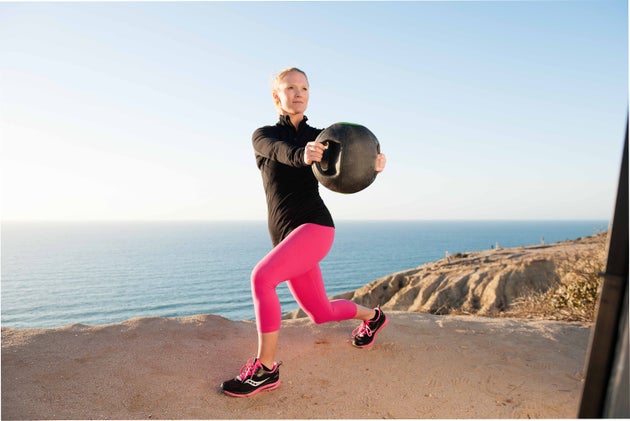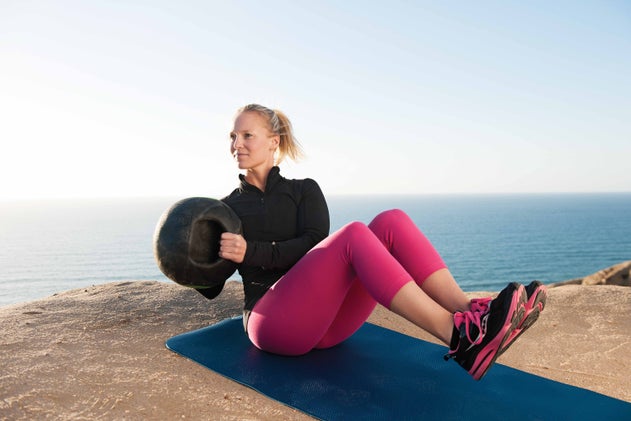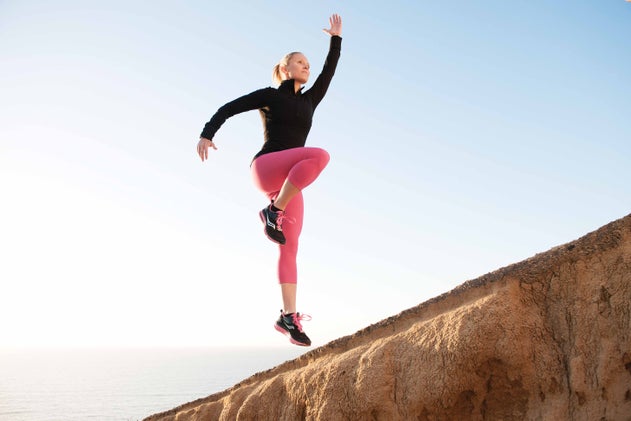New perk! Get after it with local recommendations just for you. Discover nearby events, routes out your door, and hidden gems when you sign up for the Local Running Drop.

Run more efficiently by focusing on your transverse plane.
Since running is all about continuous forward motion, we often forget that certain parts of the body are moving in other directions. This dynamic system comprises three planes of motion: sagittal, frontal and transverse. The sagittal plane includes front-to-back movements, playing a major role in running forward. The frontal plane is all about side-to-side motion—think side bends or jumping jacks. The transverse plane involves rotational movements, like swinging a golf club. The muscle groups related to the transverse plane also happen to be the most neglected by runners, often leading to injuries and performance deficits.
“Running is really a series of hops from one foot to the next, but for running to be both balanced and possible, the body needs to be able to move specific amounts on all three planes,” explains Ryan Bair, a sports physical therapist and owner of Flash Sports Physical Therapy and Performance Center in West Chester, Pa.
Indeed, a runner can display too much movement on the transverse plane or too little. These deficiencies are often linked to some of the most common running injuries, such as iliotibial band syndrome, patellofemoral pain syndrome and Achilles tendonitis. “Without sufficient rotation, we cannot move adequately on the other planes without compensating,” Bair says.
By increasing both strength and proper movement on the transverse plane, you help ensure the entire system functions soundly. Implementing several exercises, such as the three featured below, a couple of times each week can make all the difference when it comes to building a fully functional kinetic chain.

Exercise #1: Lunge With A Twist
Stand with hands behind your head. Step one foot out in front of you, lunging until both legs are bent at 90-degree angles. As you lower down, twist your torso to the side of your lead leg. When you are facing sideways, slowly twist back to the front as you raise your body upward. Alternate sides. Start with 10 reps per side.
RELATED: Dry-Land Strength For A Stronger Stroke

Exercise #2: Seated Russian Twist
Sit with your knees bent and lean back slightly to a 45-degree angle and bring your feet off the floor, engaging your core. Hold a medicine ball in front of your body and twist to one side, bringing it to the floor behind you. In a fluid motion, twist to the other side and continue alternating. Start with 20 reps per side.
RELATED – One-Hour Workout: Functional Strength Work

Exercise #3: Uphill Skips
Once you’ve gained adequate stability, you can graduate to this exercise to enhance strength and movement on all three planes. To do this, simply skip uphill, maximizing the distance you are traveling forward with each step. Focus on forward motion, keeping your core engaged to eliminate side-to-side movement. Start with 2–3 sets of 20 steps uphill.